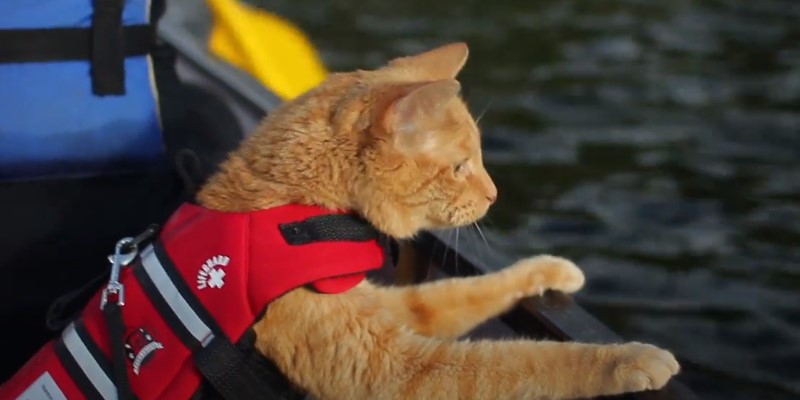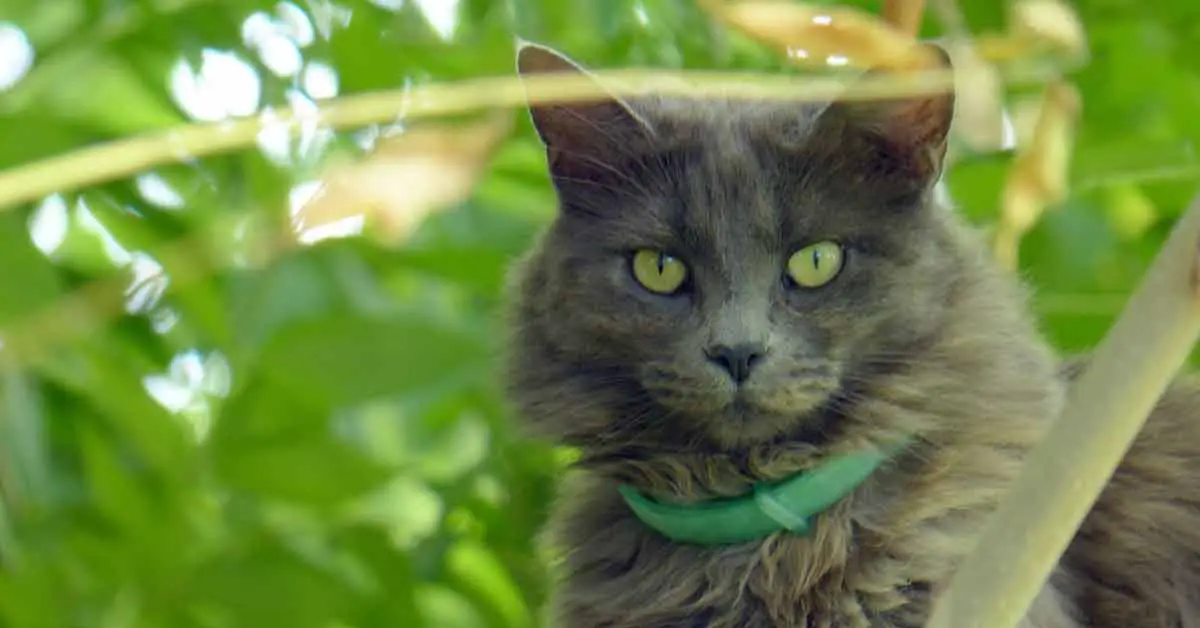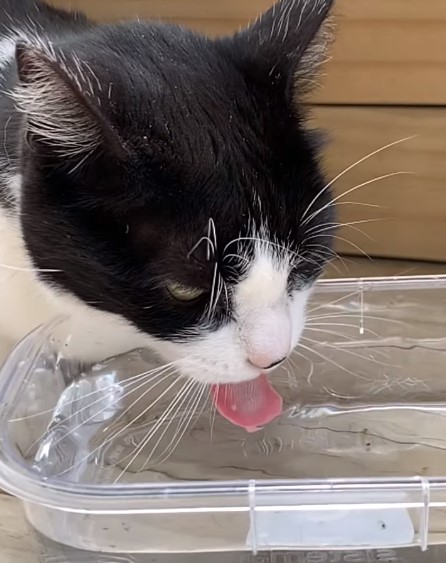Traveling with cat can be a daunting task, but with the right approach, it can be a smoother experience for both you and your feline companion. Cats often dislike car rides due to the unfamiliar noises, scents, and surroundings.
When traveling with your feline friend, follow these essential tips to ensure a safe and stress-free journey:
- Invest in a comfortable cat carrier to provide a cozy, confined space during the trip.
- Use natural treatments for pet messes to manage any accidents and prevent lingering odors.
- On road trips, stop frequently to allow your cat to stretch and relax.
- Prepare a kit with essentials like food, water, and a collapsible litter box.
- Discuss any necessary medications with your veterinarian before the journey
Tips for Traveling With Your Cat
Traveling with your cat can be a great way to bond with them and explore new places. It is companion can be both exciting and challenging. Here some essential guides to safely traveling with a cat:

1. Plan Ahead
Research and Prepare: Before embarking on your journey, research your destination’s rules and regulations regarding pets. This includes accommodations, transportation, and any necessary health requirements.
Travel Documents: Ensure you have all necessary travel documents, including a health certificate from your veterinarian, vaccination records, and any required permits.
Also Read: How To Go Camping With Cat
2. Choose the Right Carrier
Comfort and Safety: Invest in a well-ventilated, secure, and comfortable cat carrier. Your cat should be able to stand, turn around, and lie down comfortably.
Familiarity: Allow your cat to become familiar with the carrier before the trip. Leave it open in your home with a cozy blanket inside so your cat associates it with positive experiences.
3. Practice Short Trips
Acclimation: Gradually acclimate your cat to being in the carrier and taking short car trips. Start with brief rides and gradually increase the duration to help your cat become more comfortable with the experience.
Positive Associations: Reward your cat with treats, praise, and gentle petting after each practice trip to create positive associations with the carrier and car travel.
Also Read: 8 Must Have Supplies and Essentials for Your Cat
4. Identification and Microchipping
ID Tags: Make sure your cat wears a collar with an ID tag containing your contact information. This is essential in case your cat gets lost during the journey.
Microchipping: Consider microchipping your cat if they aren’t already. Keep the microchip information updated with your current contact details.
5. Health and Wellness Check
Vet Visit: Schedule a visit to the veterinarian before traveling. Ensure your cat is up-to-date on vaccinations and receive a health certificate if required by your destination.
Prescriptions and Records: Carry copies of your cat’s medical records, including vaccination history and any prescriptions they might need.
6. Pack Essential Supplies
Cat Essentials: Pack your cat’s regular food, treats, medications, and a favorite toy or blanket to provide a sense of comfort.
Litter Box: Bring a portable litter box and familiar litter to maintain your cat’s hygiene during stops.
7. Car Safety
Secure the Carrier: Place the carrier on the floor of the backseat and secure it with a seatbelt to prevent it from shifting during the journey.
No Roaming: Never allow your cat to roam freely inside the car while it’s in motion. This can be dangerous for both you and your pet.
8. Comfort and Calming
Familiar Scent: Bring an item with a familiar scent, such as a blanket or bedding, to provide comfort and familiarity for your cat.
Calming Products: Consider using calming pheromone sprays or diffusers in the car to help reduce anxiety during the journey.
9. Frequent Breaks
Stretch and Relief: Plan for regular breaks to allow your cat to stretch, use the litter box, and get some fresh air.
Safety First: Always use a harness and leash when allowing your cat out of the carrier during stops. Cats can easily become frightened and bolt if they’re not used to the surroundings.
10. Accommodations
Pet-Friendly Accommodations: If you’re staying overnight, choose pet-friendly accommodations in advance. Make sure they’re aware you’re traveling with a cat.
Safe Space: Set up a safe space in the accommodation with the carrier, familiar items, and a litter box. This will help your cat feel secure in the new environment.
11. Patience and Understanding
Adjustment Period: Understand that traveling is a new experience for your cat, and they might be stressed. Allow them time to adjust and provide comfort as needed.
Positive Reinforcement: Reward your cat for good behavior and positive reactions during the journey. This will help build their confidence and make future trips more manageable.
Though many cats don’t enjoy traveling, some cats enjoy traveling. So, take care of your cat while traveling. Accidents may occur. So be safe and keep safe your cat.
Road Trips With Cats
Traveling with cats can be a joyous experience, but it requires careful planning and preparation. This guide will provide you with all the necessary information to ensure a safe and enjoyable journey for both you and your feline friend.
#1. Invest in a Secure Cat Carrier
The cornerstone of road safety for cats is a well-designed, secure cat carrier. Opt for a carrier that is well-ventilated, sturdy, and appropriately sized for your cat. Familiarize your cat with the carrier before the trip by allowing them to explore it at home. Make the carrier comfortable with familiar bedding and toys to create a positive association.
#2. Use a Seatbelt Harness or Pet Barrier
While the carrier is essential for containment, additional measures can enhance safety. Consider using a seatbelt harness specifically designed for cats or a pet barrier to secure them in a designated area of the car. This prevents free roaming, reducing distractions for the driver and safeguarding the cat in the event of sudden stops or turns.
#3. Never Allow Cats to Roam Freely
Unrestrained cats in a moving vehicle pose significant risks to themselves and the occupants. Sudden movements or braking can lead to injury or escape. Always secure your cat within the carrier, seatbelt harness, or designated pet area to ensure their safety and minimize distractions for the driver.
#4. Gradual Acclimation to Car Travel
Cats often associate car travel with visits to the veterinarian, leading to anxiety. Ease this stress by gradually acclimating your cat to the car environment. Begin with short drives, allowing your cat to become accustomed to the sounds and motion of the vehicle. Offer treats and positive reinforcement to create a positive association with car travel.
#5. Minimize Stressors Inside the Car
Create a calm and comfortable environment within the car. Play soft music or use pheromone sprays designed to reduce feline stress. Keep the temperature comfortable, and ensure proper ventilation. Familiar scents, such as their bedding or a piece of your clothing, can provide reassurance during the journey.
#6. Secure the Carrier Properly
When using a carrier, ensure it is secured correctly in the car. Place it on a flat surface, and use seatbelts or straps to prevent shifting during the drive. This stability minimizes the risk of injury to your cat in case of sudden movements or stops.
#7. Plan Regular Rest Stops
Plan your itinerary with regular rest stops to allow your cat time outside the carrier. Use a harness and leash for controlled exploration in safe, designated areas. Provide access to the litter box, food, and water during these breaks to maintain your cat’s comfort and well-being.
#8. Never Leave Your Cat Unattended in the Car
Regardless of the weather, never leave your cat unattended in the car. Extreme temperatures can quickly endanger their health. Even with windows cracked, the interior of a car can become dangerously hot or cold. If rest stops require leaving the vehicle, secure your cat in the carrier and take them with you.
#9. Emergency Preparedness
Be prepared for unexpected situations. Carry a basic first aid kit for your cat and have essential supplies such as water, food, and medications readily available. Familiarize yourself with veterinary clinics along your route and have emergency contacts on hand. Being prepared ensures a swift response to any health concerns.
#10. Monitor Your Cat’s Behavior
Pay close attention to your cat’s behavior during the journey. Signs of distress may include excessive meowing, pacing, or hiding. If stress is evident, consider adjusting the environment within the car, providing comfort items, or taking a break to reassure your cat.
#11. Create a Familiar Environment
Within the car, replicate a familiar environment as much as possible. Use their regular bedding, toys, and even a familiar scent to provide comfort. Familiarity reduces anxiety and contributes to a more relaxed travel experience for your cat.
#12. Secure Loose Items in the Car
Ensure that loose items in the car are securely stowed. Sudden stops or turns can cause items to shift, posing a risk to your cat. Securing loose items contributes to a safe and stable environment for both you and your feline companion.
#13. Check for Travel Restrictions
Before hitting the road, research and understand any travel restrictions or regulations related to pets in the regions you’ll be passing through. Different areas may have specific requirements or guidelines for traveling with animals.
#14. Routine Maintenance of the Vehicle
Before embarking on a road trip, perform routine maintenance on your vehicle. This includes checking the air conditioning and heating systems, ensuring proper ventilation, and confirming that all doors and windows are secure. A well-maintained vehicle contributes to a safer and more comfortable journey for your cat.
Flying With a Cat
Planning to take flight with your cat? There’s a lot to things, from your airline’s pet policies to keeping your pet calm throughout the process.
The good news is many airlines have cat-friendly pet policies that allow you to bring your pup with you in the cabin of the plane.
Is My Cat Allowed on the Plane?
Before planning a trip, confirm whether your cat is allowed on the plane. Most airlines permit cats in the cabin, but policies vary. Service animals may have different regulations, and some airlines may restrict certain breeds or limit the number of pets on a flight. Contact your chosen airline well in advance to understand their specific policies regarding in-cabin pet travel.
Required Paperwork
Ensuring your cat meets all necessary paperwork requirements is essential for smooth travel. Typically, airlines mandate the following:
- Obtain a health certificate from your veterinarian shortly before the trip. This document verifies your cat’s good health and is often required within a specific timeframe before travel.
- Ensure your cat’s vaccinations are up-to-date. Airlines may request documentation of current vaccinations, including rabies.
- Securely attach identification tags to your cat’s collar, providing essential contact information. In the event of separation, these tags significantly increase the chances of a safe reunion.
- Consider microchipping your cat for added security. Ensure the microchip is registered with current contact information.
Size Restrictions
Airlines impose size restrictions for in-cabin pet travel to ensure the safety and comfort of all passengers. Typically, the cat and carrier must fit under the seat in front of you. Carrier dimensions are often limited to around 17 inches long, 12 inches wide, and 8 inches high. Check with the airline for specific size requirements, as variations exist.
Pet Fees
Most airlines charge a fee for in-cabin pet travel. Fees vary and may be influenced by factors such as the airline, destination, and whether the cat is traveling as a carry-on or checked pet. Be sure to inquire about fees during the booking process to budget accordingly.
What Are Your Airline’s Pet Policies?
Every airline has unique pet travel policies, and understanding these guidelines is crucial for a seamless journey. Consider the following factors:
- Some airlines may impose restrictions on certain cat breeds or sizes, so confirm if your cat meets the airline’s criteria.
- Check for any age restrictions for traveling pets. Some airlines may have specific requirements for young or elderly cats.
- Confirm the airline’s policy regarding the number of pets allowed in the cabin on a single flight. Some airlines limit the total number of in-cabin pets.
- Airlines often have limited slots for in-cabin pets, so book well in advance to secure a spot for your cat.
- Understand the specific requirements for cat carriers, including ventilation, construction materials, and the ability to fit under the seat.
Traveling With Cats on Trains and Buses
Traveling with your feline companion on trains and buses requires thoughtful preparation. Check with the transportation provider in advance to understand their specific pet policies.
Most train services allow small pets in carriers, ensuring your cat is secure and comfortable. Choose a well-ventilated carrier and acclimate your cat to it before the journey. Additionally, consider booking a less crowded time to minimize stress for your cat.
On buses, guidelines may vary. Some bus companies allow small pets in carriers, while others may have specific restrictions. Confirm the pet policy, ensure your cat is safely confined, and bring essential items like water, a travel litter box, and familiar comforts.
Prioritize your cat’s well-being to make the journey enjoyable and stress-free for both you and your furry travel companion.
Conclusion
Traveling with cats can be a wonderful experience with the right preparation. Remember, every cat is unique, so it’s important to consider your cat’s personality and needs when planning your trip. Safe travels!
His professional interests include humane education, ethics, small animal behavior, and veterinary. As a pet lover from school life, having grown up with two cats and a dog. If he isn’t spending time with his friends and family, Justin enjoys traveling. Learn more about Justin here.



